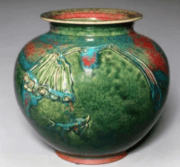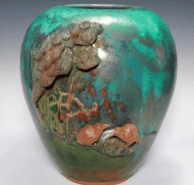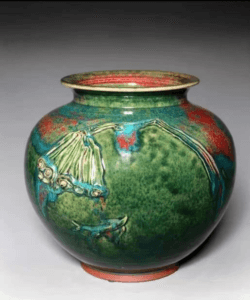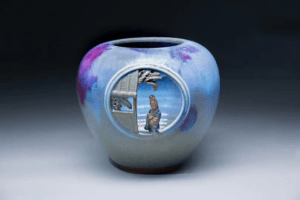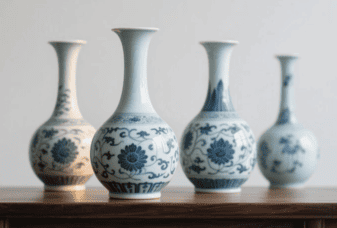Porcelain is one of the great inventions of ancient China
- made of porcelain clay, fired at high temperature, with vitreous glaze or colored decoration on the surface.
- Its production process is complex, need to go through the selection of soil, billet, glaze, decoration, firing and other procedures, and ultimately formed a delicate, hard, glaze color glistening objects. Porcelain is not only a practical vessel, but also an artistic treasure that carries Chinese civilization and enjoys the reputation of “Pearl of Oriental Art”.

Landscape on the bottle, craftsmanship condensation rhyme History
The origin of porcelain can be traced back to the Shang and Zhou Dynasties more than 3,000 years ago, and in the early days, it was called “primitive porcelain”, with rough tires and single glaze color. During the Eastern Han Dynasty, the transition from pottery to porcelain was completed, and celadon became the mainstream.
- Tang Dynasty porcelain technology has advanced rapidly, Yue kiln celadon “like jade like ice”,
- Xing kiln white porcelain “like silver like snow”, forming a “southern blue and northern white” pattern.
- Song dynasty is the pinnacle of porcelain development,
- Ru, the official, brother, Jun, Ding five kilns are in the lead: Ru kiln celadon glaze, such as “after the rain”,
- the official kiln ice cracks natural, Jun kiln kiln glaze fantastically magnificent,
- Ding kiln white porcelain delicate and elegant.

The beauty of ceramics tells the craftsmanship between the glaze flow. - Yuan dynasty jingdezhen blue and white porcelain rise,
- to cobalt underglaze color painting pioneered colored porcelain.
- During the Ming and Qing Dynasties, the techniques of overglaze color, fighting color,
- pastel color, enamel color and so on came out in an endless stream, Jingdezhen established the status of “porcelain capital”,
- and porcelain became an important commodity of the court tribute and international trade.Artistic features1. The beauty of the glaze
celadon uses iron as coloring agent, presenting the texture of green and blue like jade,
such as Longquan kiln plum green, powder green; white porcelain pursuit of pure and glittering, such as Ding kiln “ivory white”; colored porcelain through the underglaze blue,
- glaze on the color and other techniques, showing brilliant colors, such as Xuande Qingdao in the Ming Dynasty, the Qing Dynasty enamel.2. Type and Decoration
The types of ware are diverse, covering bowls, plates, vases, - pots and other practical ware and furnishing porcelain, with simple and solemn shapes (such as Song Dynasty tealights) or complex and exquisite (such as Qing Dynasty vases).
- Decorative themes are rich, landscape, birds and flowers, characters and stories can be painted, meaning auspicious and beautiful.

The round window is like an eye. 3. Technological innovation
From monochrome glaze to kiln-change glaze, from carved flowers to exquisite porcelain, technology breakthroughs. For example, - the first copper-red glaze was created in the Jun kiln in the Song Dynasty,
- and the “Tang kiln” supervised by Tang Ying in the Qing Dynasty was a collection of craftsmanship from past dynasties,
- which pushed porcelain-making skills to the extreme.Cultural InfluencePorcelain is not only a living utensil, but also a link between Chinese and foreign cultures.
- Since the Tang Dynasty, porcelain has been exported to Europe and Asia along the Silk Road, becoming a symbol of Chinese civilization. The English word “China” is derived from “Changnan” (the ancient name of Jingdezhen),
- which shows its international influence. Porcelain carries oriental aesthetics and philosophical ideas, such as the simplicity and subtlety of Song Dynasty porcelain reflecting the concept of “unity of heaven and mankind”, and the magnificence of official kilns in the Qing Dynasty highlighting the majesty of imperial power.Modern inheritanceDespite the war and the impact of industrialization, porcelain production techniques have continued.
- Contemporary ceramicists have innovated on the basis of tradition, such as the successful re-firing of Ru Kiln’s celadon glaze, which has revitalized the ancient technique, and in 2009,
- Longquan celadon’s traditional firing technique was inscribed on UNESCO’s list of Intangible Cultural Heritage of Humanity,
- which marks the recognition of this 1,000 year-old craft by the world.Porcelain, this clay and fire quenching art, is not only a witness of history,
but also a cultural heritage, and is the eternal pursuit of Chinese people’s aesthetics of life.

